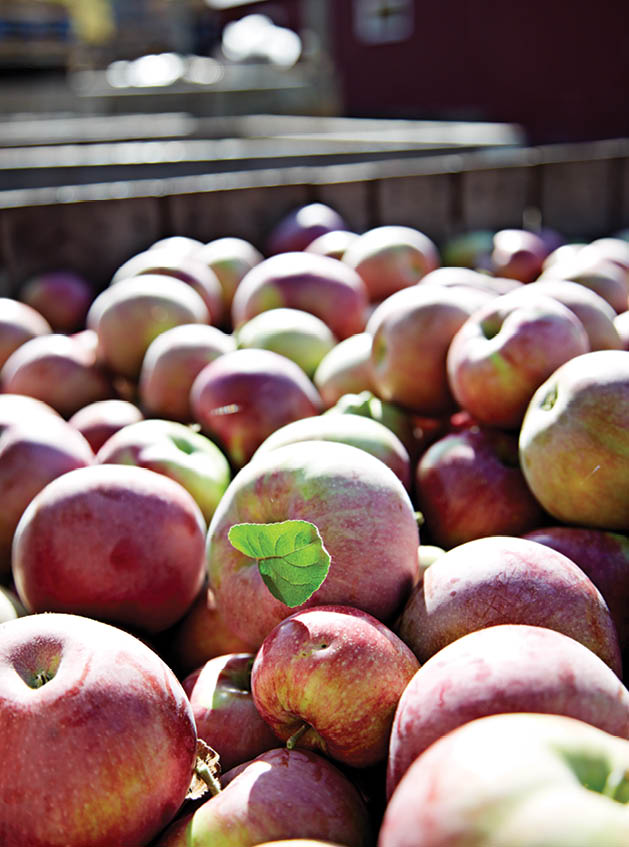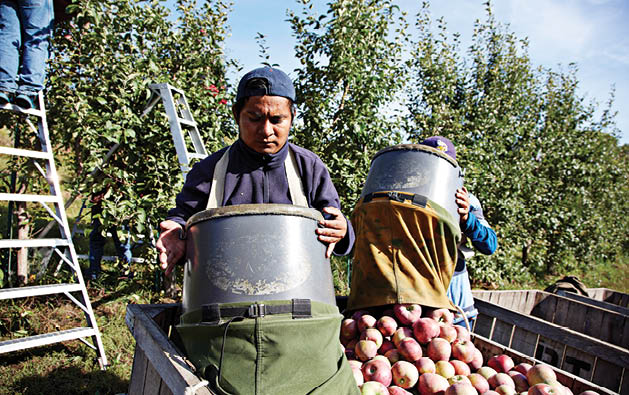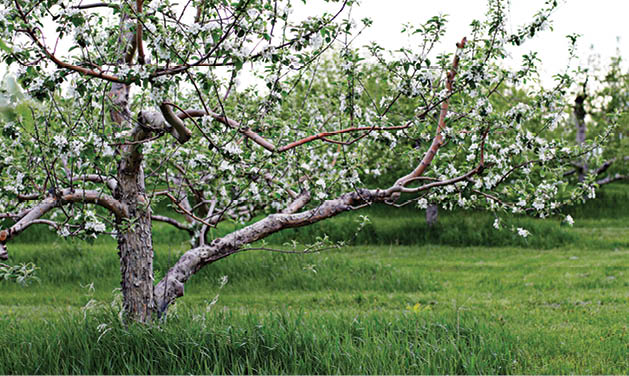When Arthur (Art) Jacobson and his wife, Dickey, bought the 25-acre orchard on the shore of Pine Tree Lake in 1958, they had visions of creating a family business and living on the land that is as bountiful as it is beautiful. Now, these many years later, the orchard has been expanded to over 300 acres and is replete with corn, strawberries, pumpkins and 75 acres of apple trees. Folks head to the picturesque locale to stock up on the freshest and most delicious produce around and to take in the myriad of activities the orchard puts on in the fall, from wagon rides and live music to a corn maze and apple-picking.
And true to the name, it’s the more than 10,000 apple trees that include our favorite 15 varieties, from Macintosh to Cortland and Sweet Tango, which fill our hearts with glee. So, with the harvest upon us, we thought it would be fun to visually capture the process—the beauty and the work of it—of growing these sweet and juicy red orbs. We chatted with grower John Jacobson, one of Art and Dickey’s six children who own and work the orchard, about the apples, and the long and juicy road to harvest.
Pruning and Preparing
“Early pruning begins in February, but the bigger cuts and more detailed pruning take place after the snow has melted,” says Jacobson. New trees and varieties are added, and adjustments to older trees happen shortly thereafter.
Blossom, Pollination and Lightening the Load
The trees begin to blossom sometime in the spring, depending on the weather, and the bees come in to pollinate. Once the fruit buds appear, if there are too many apples on trees, a hormone is applied to get the trees to drop some of the apples. “It helps to lighten the load and ease the burden for the tree,” says Jacobson. “And it creates consistency.”
Insects and Irrigation
Traps are placed to monitor for harmful insects; the orchard uses an economic threshold to determine if treatment is required. Irrigation is done with a zonal trickle system; the amount of water depends on how much rainfall the orchard has received. “We pray real hard at this point that we dodge all the storms,” says Jacobson.


Harvesting
The harvest typically runs from mid-August through the end of October. “Harvesting varies from year to year,” Jacobson says. “We may pick on Labor Day one year and a week later the next year.” In addition to looking at the overall color of the apple to see if it’s mature, the base color, which is the side of the apple that doesn’t face the sun, is also examined; when it has turned from dark green to yellow, it’s a good sign the apple is ready.
The first varieties to be picked are the Duchess and Viking, (cooking and eating apples, respectively), Macintosh, Cortland and Sweet Tango, among others. The harvest ends with the likes of Golden Delicious and Honey Gold.
On average, 12 to 15 people keep the harvest running smoothly; during peak times, the orchard is harvesting 500 to 700 bushels a day.
Cooling, Cleaning and Polishing
Once picked, the apples are placed in cold storage overnight to bring down the core temperature. The next day, they are put in a water bath, polished and placed in bags, cardboard boxes or baskets.
Apples and More
In addition to selling the apples plain for eating, and a few kinds of the caramel variety, Pine Tree Apple Orchard also has a bakery on-site that sells an abundance of apple-based products, including pies, jams, butters, doughnuts, breads and cider.










